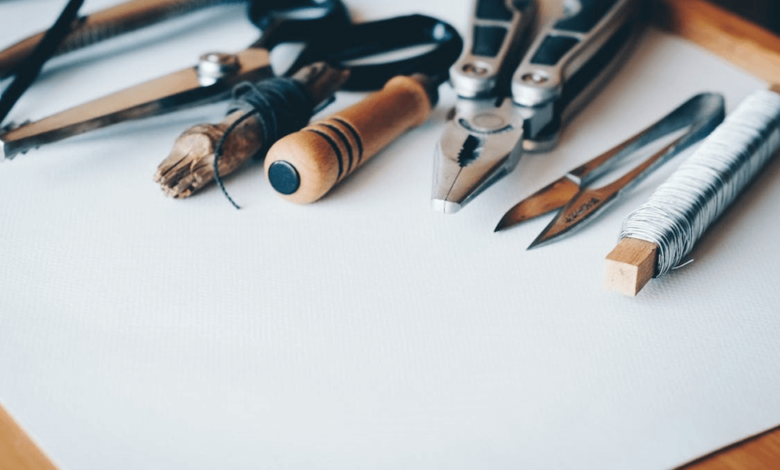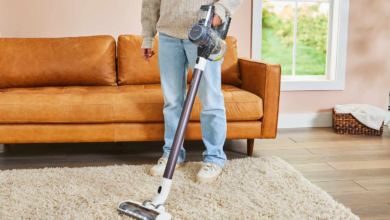10 Common Household Issues and Their Solutions

Every household, no matter how well-maintained, encounters common issues that can disrupt daily life and comfort. From malfunctioning appliances to annoying leaks and persistent odors, these problems can range from minor annoyances to more significant inconveniences. However, knowing how to identify and address these household issues promptly can save you time, money, and unnecessary stress. In this article, we will explore ten common household issues and provide practical solutions to help you maintain a comfortable and functional living space.
1. Handling a Leaky Faucet
A leaky faucet not only wastes water but also disrupts your peace with its incessant drip. This common household issue can lead to increased water bills and potential damage if left unaddressed.
The first step in handling a leaky faucet is identifying the type of faucet you have. Each type has a unique mechanism, and knowing the type helps you understand how to proceed with repairs. In most cases, a leaky faucet can be fixed by replacing a worn-out washer or O-ring. Turn off the water supply to the faucet, disassemble it, and replace the damaged parts with new ones.
2. Fixing Your Washer That Isn’t Agitating
Few things are as frustrating as a washer that won’t agitate during a laundry cycle. It can disrupt your routine and leave you with a pile of dirty clothes. If your washer won’t agitate, begin by checking if the washer is properly leveled and the load is balanced. Uneven loads can cause agitation problems. If that’s not the issue, inspect the agitator for obstructions or damage. Sometimes, small items like socks can get lodged, preventing proper agitation.
If these checks don’t resolve the problem, it might be a faulty motor coupling or transmission issue. While more complex, these can be fixed with some DIY skills or by consulting a professional.
3. Dealing with Clogged Drains
Clogged drains are a common nuisance in households, causing water to drain slowly or, in severe cases, not at all. They can occur in sinks, showers, bathtubs, and toilets, leading to unpleasant backups and potential water damage.
For minor clogs, try using a plunger or a drain snake to remove the obstruction. You can also use a homemade solution of baking soda and vinegar to break down minor blockages. For stubborn clogs, consider using a chemical drain cleaner, but use caution and follow safety instructions.
4. Repairing a Running Toilet
A running toilet not only wastes water but can also be an irritating and costly issue if left unattended. The constant sound of water running can disrupt your peace and result in increased water bills.
To address a running toilet, start by lifting the tank lid and checking the flapper valve. Ensure it is sealing properly. If it’s worn out or damaged, replacing it is a straightforward and cost-effective solution.
If the flapper valve is not the issue, inspect the float and fill valve. Sometimes, adjusting the float’s position or replacing a faulty fill valve can resolve the problem. Follow the manufacturer’s instructions for your specific toilet model.
5. Eliminating Household issues Odors
Household odors can be a persistent nuisance, affecting your comfort and the overall atmosphere of your home. These odors can originate from various sources, including cooking, pets, mold, and more.
To eliminate household odors, start by identifying the source of the smell. Remove any spoiled food, clean pet bedding, and address mold or mildew issues promptly. Ensure proper ventilation by opening windows and using exhaust fans when cooking or showering.
6. Fixing Squeaky Doors
Squeaky doors are one of those common household issues that can grate on your nerves. The sound of a door’s incessant squeaking can disrupt the peace and quiet of your home. Fortunately, addressing this problem is relatively simple.
Start by identifying the source of the squeak. Often, it’s caused by friction between the door hinge pins and the hinge plates. Applying a lubricant, such as a silicone-based lubricant or even a bit of cooking oil, can help reduce friction and eliminate the squeak.
7. Handling Electrical Outlets Not Working
Electrical outlets are essential in every household, and when they stop working, it can be frustrating and inconvenient. Before you call an electrician, it’s worth troubleshooting the issue to see if you can resolve it yourself.
Start by checking the circuit breaker or fuse box. An overloaded circuit can trip the breaker, cutting off power to the outlet. If you find a tripped breaker, reset it to restore power. Similarly, check for blown fuses and replace them if necessary.
8. Repairing Wall Cracks and Holes
Wall cracks and holes are not only unsightly but can also impact the overall aesthetics of your home. Whether they result from minor wear and tear or accidental damage, repairing them is a straightforward DIY task.
For small cracks and holes, you can use spackle or joint compound to fill in the imperfections. Apply a thin layer of the compound, allow it to dry, then sand it smooth before painting over it to match your wall’s color. For larger holes, consider using a patch or a self-adhesive mesh tape to reinforce the repair. Apply the compound over the patch, smooth it out, and sand it down once it’s dry.
9. Addressing a Malfunctioning Refrigerator
A malfunctioning refrigerator can lead to food spoilage and inconvenience. Common issues with refrigerators include temperature problems, unusual noises, and leaks. While some refrigerator repairs may require professional assistance, there are steps you can take to troubleshoot common problems.
Start by checking the temperature settings. Ensure that the thermostat is set to the recommended temperature, typically between 37°F and 40°F for the refrigerator section. If the temperature is too high or too low, adjust it accordingly.
10. Solving Wi-Fi Connectivity Problems
In today’s interconnected world, a stable Wi-Fi connection is essential for work, entertainment, and communication. Wi-Fi connectivity problems can be frustrating, but they often have straightforward solutions.
Start by rebooting your router and modem. Sometimes, a simple reset can resolve connection issues. Additionally, ensure that your router is placed in a central location, free from obstructions, to maximize coverage.
Conclusion
Common household issues may seem daunting, but many can be resolved with a bit of knowledge, patience, and effort. From fixing a squeaky door and addressing electrical outlet problems to repairing wall cracks and handling Wi-Fi connectivity issues, knowing how to troubleshoot and resolve these problems can save you time and money.




